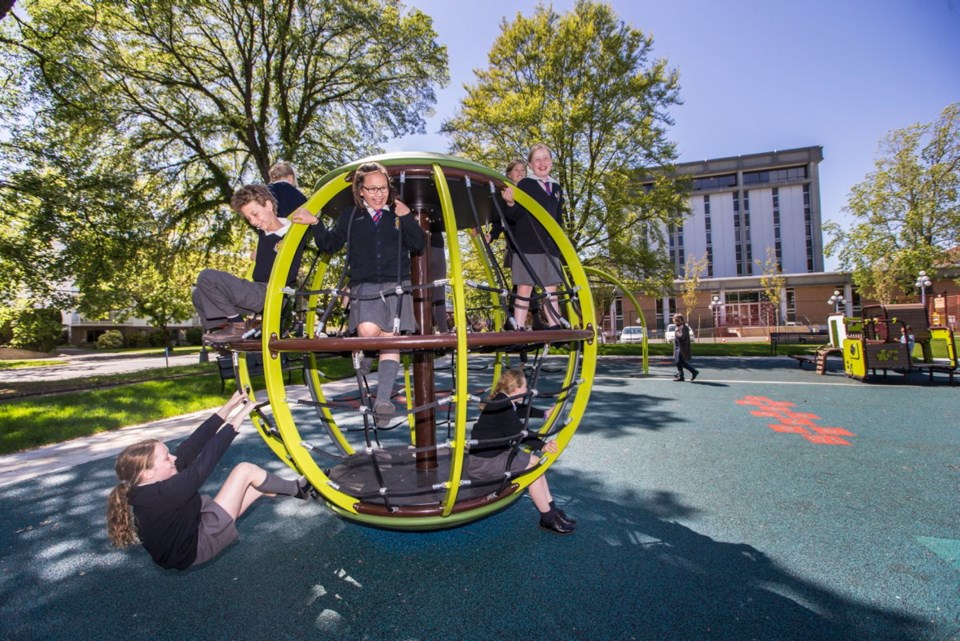Not to sound too much like the codger I have probably become, but my childhood playground was my dad’s backyard with two fully grown Australian gum trees. One was for climbing as high as we could and the other had a single Tarzan rope for swinging out over the yard. Way out over the yard.
In later years, the bushland behind our house and the mountain beyond was where we played war. Separating my family’s property from the bushland was a rail line on which a train carried coal from a nearby mine.
It provided the perfect opportunity to watch train wheels convert a small coin into a larger coin. Even more fun was to shout rude things at the driver who would then throw coal at us.
That was the coal my dad burned in our living-room fireplace.
More years later, there was a two-mile bike ride to the beach and the open ocean where we learned, without instruction from any adult, to handle ourselves surfing in turbulent water rife with rips and currents.
But times have changed. I mention all this because of the resurgence of interest in building riskier playgrounds that can include equipment that goes beyond traditional “safe” playground structures with equipment that is higher, less stable and with landing surfaces that aren’t necessarily soft.
Modern playground design includes more complex than normal slides, ziplines, swings of varying heights and rope walkways.
Recent research from the University of British Columbia and the Child and Family Research Institute at B.C. Children’s Hospital found that play environments where children could take risks promoted increased playtime, social interactions, creativity and resilience.
The findings, published in the International Journal of Environmental Research and Public Health, found that children who participated in physical activity such as climbing and jumping, rough-and-tumble play, even exploring alone, developed greater physical and social health.
Mariana Brussoni, lead author of the study, and assistant professor in UBC’s School of Population and Public Health and Department of Pediatrics, wrote: “We found that play environments where children could take risks promoted increased play time, social interactions, creativity and resilience.”
“These positive results,” wrote Brussoni, “reflect the importance of supporting children’s risky outdoor play opportunities as a means of promoting children’s health and active lifestyles.”
What makes all this of greater interest than usual is the recent announcement that dozens of schools around British Columbia will have new government-funded playgrounds by the time students return to class in September.
Premier John Horgan announced recently that his government has created a $5-million fund for ongoing support of 51 new “accessible” school playgrounds, each, as far as far as can be determined, to be designed by the school district receiving funding.
The stated intention, according to the premier, is to lift the burden off volunteer-run parent councils, which often have to fundraise for new or upgraded equipment.
This raises a host of interesting questions, not the least of which involves the potential for conflict in an increasingly litigious society between parents who do and parents who do not want their children playing on riskier equipment designed by their school district.
That, in turn, raises the question as to whether government, as the funder (and in a sense the owner) would protect itself from potential litigation by approving only safer, more conventional playground designs or even whether there will be an approval process at all.
Relatively new to the whole discussion, about what children can do not only on playground equipment but in playgrounds generally, comes the International School Grounds Alliance.
With members, according to its website, from Australia, Canada, Germany, Japan, Sweden, the United Kingdom and the United States, the ISGA goes a step beyond the “nature school” idea with suggestions as how to re-introduce manageable elements of risk into children’s play: a rough hewn bridge that introduces kids to natural textures, a spider-web-like play structure that helps children develop a sense of balance, a boulder wall made of natural stone that kids can climb and jump off.
Always bearing in mind, of course, that if kids can find something potentially dangerous to do with even the safest equipment, they probably will.
With the government contemplating the addition of these new playgrounds, some serious preliminary discussions are needed with the partners in B.C’s. public education as to what what kind of growth and development these new playgrounds will be designed to provide.
Geoff Johnson is a former superintendent of schools.



